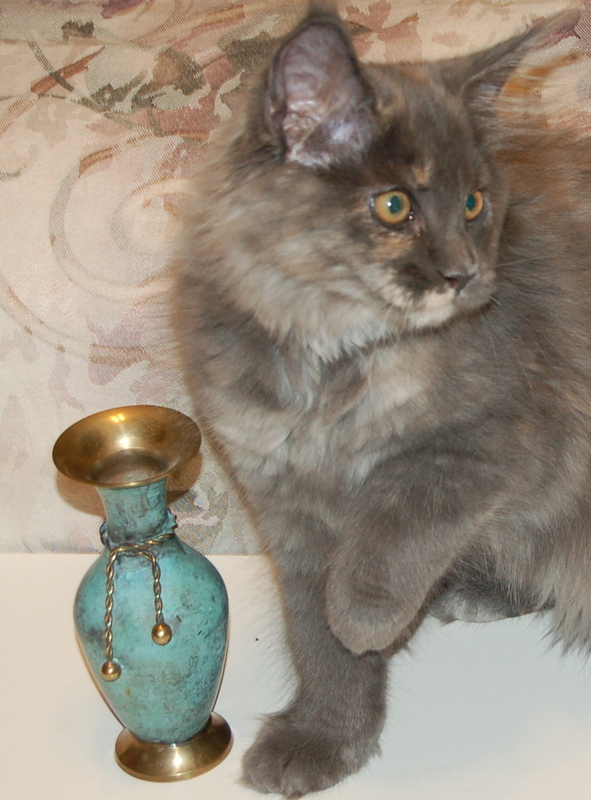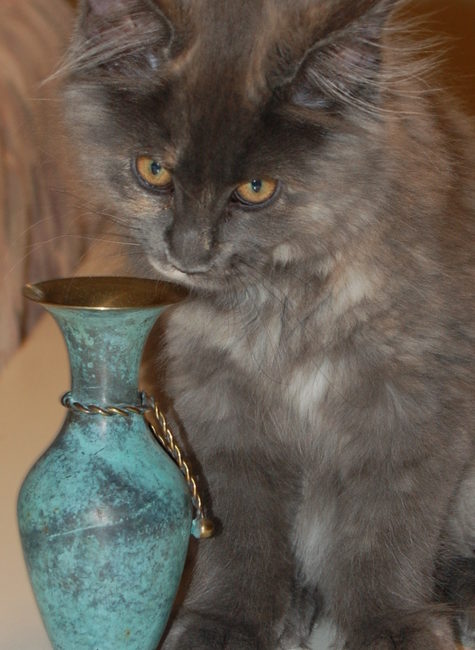Take some simple steps to kitten-proof your home
At 14-weeks-old, Rigel is full of kittenish curiosity about her new home and she’ll happily get into lots of trouble if left to it – once she comes out from under the bed.
Kitten-proofing the house is essential when adopting a young cat like Rigel. One of the first steps is to find a room – even a very clean bathroom will do – where the kitten can be confined with all the essentials. There must be space to separate the litterbox and food bowls as cats don’t like to eat where they eliminate and vice versa. Finding a spot for a scratching post helps lots with early training.
This room will be Safe Haven where the kitten spends most of her time for the first week or two. It will be her base for explorations once allowed to roam the house and you’ll regularly see her scoot back there, chased by an assortment of imaginary monsters. If you have other pets, they can start introductions through the crack under Safe Haven’s door.
When Rigel first spotted one of her new Sheltie housemates, she puffed up into the biggest Maine Coon kitten ever seen, but still managed to squeeze under the bed in a flash. Her owner Sue will be introducing Rigel to her Shelties more slowly over the next few weeks, using barriers and leashes to keep everyone unpuffed. In the meantime, there’s much kitten-proofing to be done around the house.
To make a house safe for a cat’s infamous curiosity, check high and low for hazards. Are there enticing shelves on the walls? Be sure they are solid enough to hold Rigel all her life as she will likely scale them. Cats love to be up high. Special cat shelves and trees are available to make the climbing habit safe.
All the paraphernalia of hobbies such as sewing, model-making, and knitting should be stored away in impenetrable containers. Garbage cans need solid lids or should be put in cupboards. Normally cats with their finicky appetites don’t get into food waste, but they will happily play with dental floss, string, plastic and other trash that can cause dangerous bowel obstructions if eaten.
Like most kittens, Rigel is super flexible and she will be able to contort her body into the tiniest of spaces. If you doubt, just look at the YouTube videos of kittens inside vases, wineglasses and, yes, hamsterballs.


So, get down to cat perspective and block off potentially dangerous hidey-holes like the spot behind the fridge or woodstove. Make a habit of keeping the door to the clothes dryer closed.
Keep the toilet lid down. Young kittens can drown in the water. And, while we’re in the bathroom, you probably want to put the toilet paper in the cupboard or buy a shield that covers it on the spool. Maybe it’s not dangerous, but shredded toilet paper is an avoidable mess. With adult cats, just turning the roll so it unwinds from underneath usually spoils the game.
Never go out without knowing your kitten is safe and not locked in a closet or somewhere dangerous. Kittens are always looking for amusement. It’s up to you to see they don’t meet trouble along the way.
Formerly a newspaper journalist, Dr. Fiona Gilchrist is a vet at Hillcrest Animal Hospital in Trenton (hillcrestanimalhospital.ca) and an executive member of the Quinte District Veterinary Association.




